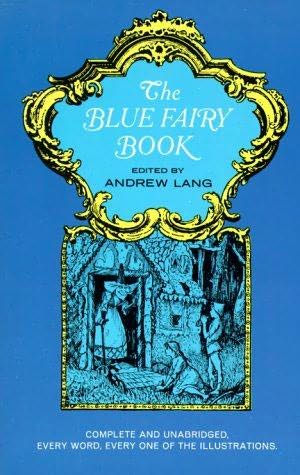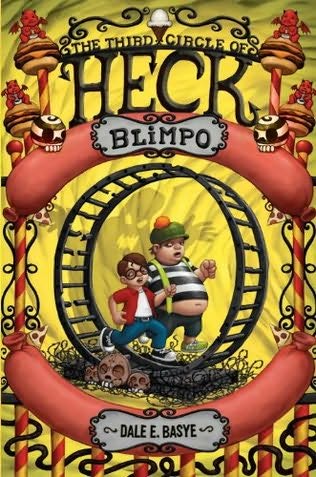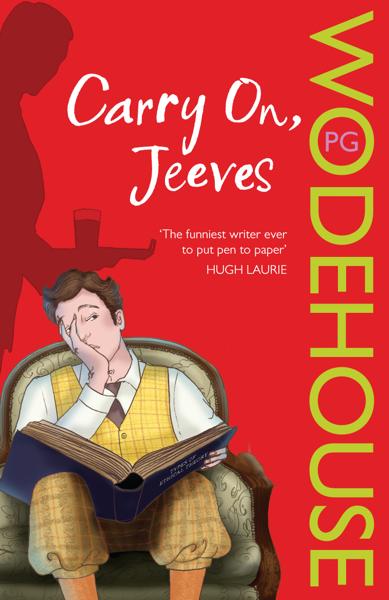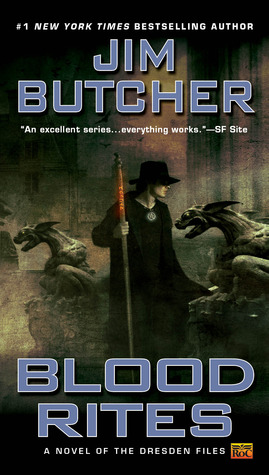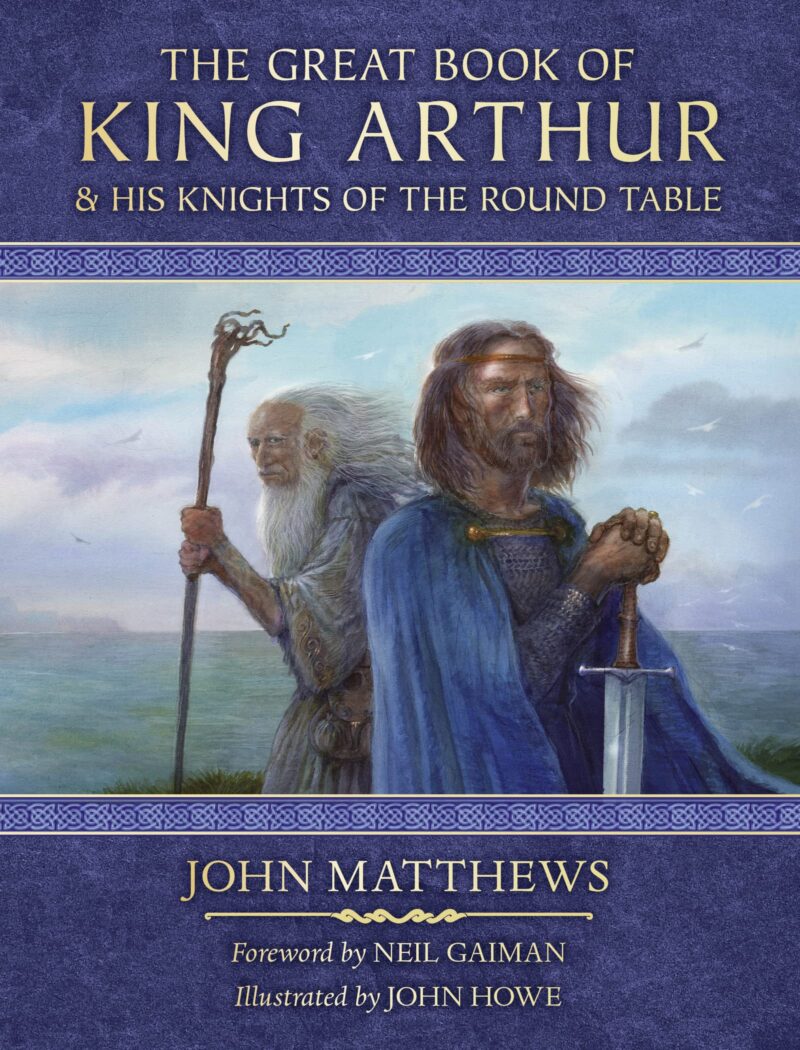“Once upon a time…”
The first of 12 “colorful” books of fairy tales collected by the all-time master of bedtime stories, you can still enjoy the original woodcut illustrations dating from the book’s first publication in 1889. It is bursting with terrific fairy tales, some of which you already know, and all of which you will enjoy getting to know better. And because I hardly have room to review every story in the book in detail, I’m going to tackle one aspect: the moral lesson or “nitty gritty” of each successive tale.
1. “The Bronze Ring.” From a Turkish folk tale by way of the French, it is a big story sprawling with whimsical adventures. It’s hard at first to pin down a single “turning point” in the story to draw the moral from, until you realize that there are actually two hinges in it. The first hinge is the rivalry between a Prime Minister’s son and a lowly gardener’s son, for the hand of a beautiful princess. What turns the hinge is, how each suitor treats a beggar woman they meet on the road. The first moral, then: “Be kind to beggar women.” The second hinge is the rivalry between the successful suitor and an evil magician, over a magic ring that grants its owner whatever his heart desires. The second moral: “Don’t be careless with the things that really matter.”
2. “Prince Hyacinth and the Dear Little Princess.” From the French. Hyacinth is raised to believe that his unusually large nose is perfectly normal. He does not learn to consider it a figure flaw until it gets in the way of saving his Dear Little Princess. The moral, and this is actually a quote: “You see how self-love keeps us from knowing our own defects of mind and body. Our reason tries in vain to show them to us; we refuse to see them until we find them in the way of our interests.”
3. “East of the Sun and West of the Moon.” Descended from the Greek legend of Eros and Psyche. In this version, from Scandinavian sources, a white bear wins the hand of a fair maiden in marriage. She spends her days bored and depressed in a beautiful but lonely castle, and her nights in the arms of a man whose face she is never allowed to see. In spite of her lover’s warning, she listens to her mother’s advice and sneaks a peek at his beautiful face while he sleeps. Thus their happiness is ruined, a cruel enchantment separates them, and the girl has to travel over the whole world, visit the four winds, and find her way to the castle East of the Sun and West of the Moon, where she finally outwits the troll who is supposed to marry her lover. Moral: “Even malice and suspicion cannot entirely undo true love, which will go to the ends of the world to make it good.”
4. “The Yellow Dwarf.” From the French. This is a fine Romantic adventure about a handsome prince who fights tremendous odds to escape a wicked fairy and to save his intended from an equally wicked dwarf. Unfortunately it ends in bittersweet tragedy. The story again seems to have two hinges. The first moral: “Don’t make promises you’ll regret, especially under duress.” The second: “If the flipping mermaid tells you not to drop the sword, don’t drop the flipping sword!” No, wait, that’s not right. The real second moral is: “True lovers cannot even be separated by death.” Sigh.
5. “Little Red Riding-Hood.” Here is probably the original, very brief, to-the-point, and totally merciless version of the well-known story of a silly child who couldn’t tell the difference between her Grandmamma and a wolf dressed in Grandmamma’s pajamas. Snort! Give me a break! But actually this is a very, very practical tale, and it’s no wonder every parent in the world tells it to his or her littlest child, five nights out of twenty. With all the makey-nicey amendments left out, like the apocryphal woodcutter who splits open the wolf’s belly and lets Grandmamma out, the story is very straightforward and its moral is clear: “Never, ever, under any circumstances, talk to strangers; and always, without fail, whenever Mamma sends you out on an errand, go directly there and come directly back without messing around along the way.” If more children took this moral to heart, far fewer hearts would be broken.
6. “The Sleeping Beauty in the Wood.” The familiar Sleeping Beauty story is only half of what we find here. Because of some archaic language you might want to have a dictionary to hand. We read “in the room of” instead of “in the place of,” for one example, and “hautboy” instead of “oboe.” Once again we have a double-jointed story. First moral: “Be careful whom you neglect to invite to your special occasion,” such as a christening, because some guests have a way of avenging themselves when they feel slighted. Second: “A really good cook can fake anything.” Ha! But seriously, “If your mother is an ogress, don’t leave her alone with your wife and kids for extended periods of time.” Who knows, she might try to gobble them up!
7. “Cinderella; or, the Little Glass Slipper.” From Perrault. This is pretty much the version we all know. It almost seems as if the moral is “Clothes make the (wo)man” or “Adequate footwear is essential,” but actually it runs more along the lines of, “The last shall be first, and the first last.” It’s reflects nicely on Cinderella’s character that she was so kind and forgiving to her stepsisters. Be advised, “mother-in-law” used to mean what we now call “stepmother.”
8. “Aladdin and the Wonderful Lamp.” A worthless, idle, fatherless lad rises to become the husband of the Sultan’s daughter, and eventually, Sultan himself, with the aid of two genies, and in spite of the malice of two magicians. This is another double-jointed story, but it basically resembles “The Bronze Ring” in its outline. Hinge one: “Take good care of the things that really matter.” Hinge two: “Beware wolves in Mother Theresa’s clothing.” One thing I found confusing about this version of the Arabian story is that the setting suddenly changes from Persia to China. Oh, well. Nobody’s perfect!
9. “The Tale of a Youth who Set out to Learn what Fear was.” From the brothers Grimm. Here is an ironic story with a touch of picaresque. That’s a fancy word meaning, the narrator is supposed to be a simpleton but he is actually wiser than most. A man has two sons; one is clever and competent, but frightened of all the things that frighten ordinary people. The other is a simpleton, not good at much of anything, and too blockheaded to understand fear. He finally brings so much shame to his family that he is sent out to seek his own fortune, which in his mind means, to learn to shudder. But after going from one hair-raising situation to another, he still does not know fear. Finally he spends three nights in a castle full of evil spirits, thereby winning a princess’ hand and a huge fortune. But he only learns to shudder when his wife’s maid dumps a kettle of fish on him in his sleep. Maybe a lesson from this is that people with no imagination have little anxiety or fear. But I guess the real moral of this hair-raising tale is, “Don’t let the things that go bump in the night trouble you. The only harm they can do is to frighten you.”
10. “Rumpelstiltskin.” From the brothers Grimm. This brief, concise classic combines a number of moral lessons in one tidy package. First, “Beware of idle boasting.” Second, “Don’t make promises you’ll regret later, especially under duress.” And third, “Don’t do a victory dance until the prize is in your fist.” Honestly, though, do you suppose the miller’s daughter could be happy, married to such a greedy king? Probably the most despicable character in the story, he’s the only one who doesn’t get taught a lesson!
11. “Beauty and the Beast.” A truly gorgeous love story from the French. A poor merchant strikes a bargain with a horrible beast, that the merchant’s life will be spared if one of his daughters comes to live in the beast’s castle of her own free will. The devoted youngest daughter, aptly named Beauty, consents to go, and with the aid of a series of nighttime visions she learns to look past appearances and to love the ugly creature that is so gentle to her, finally freeing a handsome Prince from an enchantment. The moral: “The beauty that really matters is more than skin deep.”
12. “The Master-Maid.” From the Scandinavian. A wickedly funny and eventful tale about the youngest son of a King, who becomes the servant of a giant and falls in love with the giant’s Master-Maid. The Master-Maid, in turn, helps the Prince accomplish three tasks the giant sets him, then helps him escape. A second phase of the story concerns an enchantment which causes the Prince to forget the Master-Maid and marry another girl, and how three hilariously frustrated suitors to the Master-Maid help to bring the couple back together. There hardly seems to be room to mention half of the wonderful gags in this story, from the River-Sucker to the fate of the Sheriff, Attorney, and Bailiff. Moral: “Nothing can get in the way of true love.” Or, “Love makes the absurd possible.”
13. “Why the Sea is Salt.” From the Scandinavian. A rich brother grudgingly gives his beggarly brother a ham for the holidays, then tells him to go to hell. Obediently the poor brother goes, where the denizens of hell eagerly swap an enchanted hand-mill for the ham. The hand-mill makes the poor brother rich, but there’s a trick to making it stop, as first the rich brother, then a sea captain, find to their cost. Moral: “Be careful how you sneer at the poor.” Or maybe, “Before you start something, know how to stop it.”
14. “The Master Cat; or, Puss in Boots.” From Perrault. The three sons of a poor miller inherit, respectively, the mill, the donkey, and the cat. The youngest feels, at first, that he has gotten a poor deal. But the cat asks only for a sack and a pair of boots, and using his own cleverness, Monsieur Puss builds his master’s portion and arranges his marriage to a King’s daughter. The moral, similar to that of “Why the Sea is Salt,” is: “The potential for great success lies hidden even in the humblest means.” Or, “Never underestimate your cat.”
15. “Felicia and the Pot of Pinks.” From the French. When their poor father dies, he leaves very little to Felicia and her brother Bruno–Felicia herself only gets a silver ring and a pot of pinks (a kind of flower). And very soon Bruno is mistreating Felicia quite badly, until a fairy queen comes to her rescue and reveals the truth behind such oddities as a talking cabbage and a talking hen. The story is a complex entanglement of enchantments and the wand is used perhaps a bit too much, but the moral is: “Patient endurance leads to great rewards.”
16. “The White Cat.” From the French. A king sets his three sons a series of tasks, promising to reward the one who does the best job with the crown, but actually he only wants to keep them busy so he doesn’t have to give up his crown at all. The youngest and handsomest of the three spends most of the time being entertained in an enchanted castle inhabited by disembodied hands and talking cats, and falling in love with the Queen of the Cats, who is finally released from her enchantment and resumes her form as a beautiful (human) Queen. And everyone lives happily ever after. The moral, which really comes from the story-within-a-story of how the Queen became enchanted, is: “Count the cost before you strike a bargain.” Oh yes, and, “Look beyond appearances.”
17. “The Water Lily. The Gold Spinners.” A witch has enslaved three princesses to spin gold flax into thread, warning them not to talk to any men lest their thread lose its brightness. When a lost prince comes their way, the youngest sister fails to heed this warning, and as the lovers make their escape a nasty spell causes her to fall off the horse into a river. The distraught prince eventually learns, by communicating with birds, that she has been transformed into a water lily, and by becoming a crab he is able to pick her off the river bottom, swim to shore, and restore them both to human form. The morals of this story are: “Don’t forget your promises,” and, “When you’re in a pickle, don’t despair; ask for expert advice.”
18. “The Terrible Head.” The names are left out, but this is essentially the Greek legend of the hero Perseus, whose mother was a princess named Danae and whose father was the god Zeus (in the form of a shower of gold). Danae’s father was frightened by a prophecy that his grandson would kill him someday, so he had mother and child locked in a chest and thrown into the sea. They washed ashore on an island whose king, wanting Perseus out of the way so he could marry Danae, sent the lad to slay the hideous gorgon Medusa, the sight of whose face was enough to turn men into stone. After succeeding in this adventure with the help of the gods Athena and Hermes, Perseus rescued the Ethiopian princess Andromeda, daughter of King Cepheus and Queen Cassiopeia, from a ravening sea-monster, and finally in an athletic contest held in celebration of his marriage to Andromeda, threw a discus that accidentally killed a man who turned out to be his grandfather in disguise. The names (which are of interest both to stargazers and to Harry Potter fans) are left out, but the story is pretty much intact. Moral: “The more you try to prevent a prophecy from coming true, the more you help it along.” Besides the prophecy aspect, Potterheads will also find the Medusa concept familiar…
19. “The Story of Pretty Goldilocks.” From the French. This is not the Goldilocks who visited the three bears. This one is a very beautiful princess, who toys with the attentions of a very handsome king. The king sends an even handsomer ambassador, named Sir Charming, to plead with the princess to become his Queen. She sets Charming three homicidally difficult tasks, which he accomplishes with the help of three grateful animals, and earns the princess’ undying admiration. Nevertheless he faithfully brings her home to marry his king, who rewards Sir Charming by throwing him into the tower in a fit of jealousy. Eventually it all works out, but meanwhile there are at least two morals to this story: “Always be kind to animals,” and “A man who listens to the malicious talk of his enemies will soon grow unjustly jealous of his friends.”
20. “The History of Whittington.” This piece actually seems to be based on a real historical figure–“Turn again, Whittington, thrice Lord Mayor of London”–whose life story grew so popular that it passed into folklore. At one time, at least, this story was as well-known to every British child as the story of George Washington chopping down the cherry tree is to us Yanks. I cannot tell a lie. Dick Whittington came to London a starving, orphaned child, in rags; he was beaten so hard and so often by the cook he worked under, that when his cat went abroad and made a vast fortune for him, and someone tried to tell him the news, Dick “besought his master not to mock a poor fellow who meant no harm, but to let him go about his business.” Nevertheless Dick ended up becoming filthy rich, marrying his boss’s daughter, serving three terms as Lord Mayor of London, and entertaining King Henry V in his home. The moral of this historical rags-to-riches tale is either, “Never underestimate your cat (even if it doesn’t wear boots),” or, “Through faithful service, and with a bit of luck, the lowest person can rise very high.”
21. “The Wonderful Sheep.” From the French. Once again we visit the theme of a King enchanted to take animal form, who wins the heart of a beautiful Princess. (See “Beauty and the Beast,” or with the sex roles reversed, “The White Cat.”) Only this time, the Princess is named Miranda, the King has been turned into a sheep, and instead of a castle, he lives in an underground realm which seems to be equal parts Fairyland and the Underworld. And this time the princess is plagued by a violently jealous father, whose suspicions send Miranda on her melancholy journey, and whose selfishness finally leads to a surprisingly tragic end. The moral, in the story’s own words: “Even a princess is not always happy–especially if she forgets to keep her word; and the greatest misfortunes often happen to people just as they think they have obtained their heart’s desires!”
22. “Little Thumb.” From Perrault. Similar to the story of Hansel and Grettel, it concerns a poor woodcutter and his wife who, during a season of famine, decide to strand their seven small sons in the forest rather than starve with them. The first time, the youngest and cleverest child (Little Thumb) saves the children by dropping white pebbles on the ground to show them the way home. The second time, when he drops bread crumbs instead, the birds eat them up and the children are truly lost. But after outwitting a child-eating ogre with seven league boots, they manage to return home with the ogre’s fortune. In an alternate ending, Little Thumb doesn’t steal the ogre’s treasure, but uses the seven league boots to earn royal gifts by serving as a messenger to the King’s army. The moral: “It is often a mistake to reckon a quiet child to be stupid.”
23. “The Forty Thieves.” From the Arabian Nights. Ali Baba discovers the secret password to the lair of a band of thieves (“Open, sesame!”) but his greedy brother Cassim is not so clever. The result is that Morgiana, the slave girl, must use her wits to save her master’s life several times, until all the thieves are destroyed. Though it may not seem particularly moral to profit from stolen goods, the moral might be stated: “Do well by your underlings, and they will do well by you.” Or maybe, “Keep your wits about you and you may get through even the deadliest danger.”
24. “Hansel and Grettel.” From the brothers Grimm. Their version of Perrault’s “Little Thumb,” featuring the son and daughter of a poor woodcutter, the story is pretty much the same except their stepmother is rather nasty, and the child-eating monster turns out to be a witch with a house made of sweets. Both children show cleverness and pluck, and their adventures also include a ride on the back of a white duck. The moral seems to be, “Let virtuous children trust God, and he will help them.” Or perhaps it’s (quoting here) “If a man yields once he’s done for.” But perhaps Grimm did not mean for there to be a moral, as the tale ends with the amazing statement, “My story is done. See! there runs a little mouse; anyone who catches it may make himself a large fur cap out of it.” (I’m sure this rhymes in the original German.)
25. “Snow-white and Rose-red.” From the brothers Grimm. I do not know if this is supposed to be the origin of “Snow White and the Seven Dwarfs.” In this story Snow-white and Rose-red are inseparable sisters, who live a life close to nature in a forest cottage with their mother. They befriend a large bear, who turns out to be an enchanted Prince; and they have various dealings with a very ill-tempered dwarf who seems to be trying to steal the bear’s treasure. The story, which contains the delightful sentence “The fish had the upper fin,” has the moral: “Virtue and friendship with nature must prevail over avarice.”
26. “The Goose Girl.” From the brothers Grimm. A princess is sent off to a far kingdom to marry a prince, taking with her a talking horse and a very wicked waiting-maid. The maid overpowers the princess and traps her in an oath, so that the maid marries the prince and the real princess becomes an assistant goose herder, under an impertinent boy named Curdken. The maid has the horse assassinated, but its head is propped above a gateway the goose-girl goes through every day when driving the geese out to pasture, and it talks with her. Curdken reports this to the King, who cleverly finds out the truth (you’ll love the bit where the Princess pours out her woes to an iron stove), and both the moral of the story and the fate of the false maid is: “Condemned out of your own mouth.”
27. “Toads and Diamonds.” From Perrault. A nasty old widow has two daughters: one nasty like herself, the other lovely and sweet. Of course she favors the nasty one and treats the sweet one like a servant. Both daughters are tested by a fairy in disguise, and based on their manners (good or bad) one is given the gift of spitting out jewels and flowers with every word she speaks, the other of spitting vipers and toads. Decide for yourself what the moral is, but I say, if what was inside all people became so readily apparent when they spoke, the world would be a far simpler place!
28. “Prince Darling.” From the French. An extremely moralistic story about a prince who is befriended by a fairy who promises to be his conscience, and help him to be good–by punishing him when he is bad. At first he is a good ruler, quite willingly. Then he falls under the influence of worthless men, and is led astray until he becomes perfectly monstrous. As punishment, the Fairy Truth transforms Prince Darling into a monster, from which he redeems himself gradually by showing repentance for his wickedness and making amends. The moral (also a quote): “A good action always brings its reward.”
29. “Blue Beard.” >From Perrault. The well-known story of the rich man, frighteningly disfigured by a blue beard, whose wife discovers a room full of the murdered bodies of her husband’s previous wives. Maybe the moral is, “Trust your first impression.” Or maybe it is, “When all else fails, stall.”
30. “Trusty John.” From the brothers Grimm. A young king’s most trusted servant has sworn, at the old king’s deathbed, to serve his new master faithfully even at the cost of his own life. So trusty John helps the young king woo the unreachable Princess of the Golden Roof, and win her; then, placing his own life in jeopardy, braves three trials to keep the royal marriage from ending in premature tragedy. Caught between being hanged for treason or turned to stone for explaining what he did, Trusty John becomes a statue–only to be saved, in return, by a royal sacrifice. An interesting moral: “Leaders may demand of their subjects the supreme sacrifice; but leaders owe the same in return.”
31. “The Brave Little Tailor.” This is one of my all-time favorite stories. Irreverently funny, it tells how a clever little tailor made a whole kingdom believe that he was a valiant hero. The moral might be, “Work smarter, not harder.” Or, “Brain beats brawn.”
32. “A Voyage to Lilliput.” An extract from Gulliver’s Travels by the satirist Jonathan Swift. It consists of several chapters, telling how the narrator (a ship’s surgeon) survived a shipwreck and swam ashore of an island inhabited by six-inch-tall people. The pomp and splendor of empire and Emperor appear a bit ridiculous in miniature, and the Lilliputians believe that they and their enemies on the island of Blefuscu are the whole world. Their wars and their politics also come in for a bit of ridicule. The narrator draws his own moral: “Trust not in princes.” But between the lines the real moral seems to be: “Our affairs are not as significant as we imagine.”
33. “The Princess on the Glass Hill.” Here’s a Scandinavian version of the Cinderella tale with the sex roles reversed. Cinderlad is the youngest of three sons, and the only one considered too filthy and vulgar to attend a tournament in which knights and princes vie for the hand of a princess. But to win her hand, someone has to ride a horse up a steep glass hill and fetch three golden apples from the princess’s lap. On each day of the tournament a mysterious knight in shining armor appears and gets one of the apples, then vanishes just as suddenly. Finally, after every man in the kingdom has presented himself before the king and no one has been found with the apples, Cinderlad comes forward and reveals himself as the mysterious knight, who had gotten his horses and armor in a mysterious way related at the beginning of the story. Moral: “Courage and cleverness can raise the prospects of even the lowest, most insignificant person.”
34. “The Story of Prince Ahmed and the Fairy Peribanou.” From the Arabian Knights. First the Sultan sets his three sons tasks to determine which will marry a beautiful princess, and in the first task they draw, and in the second task the middle son apparently wins. The eldest becomes a hermit, and the youngest goes on to an even happier fortune by discovering and marrying a fabulously wealthy fairy queen. But the old Sultan’s favorites provide toxic advice, so that the Sultan tests Ahmed’s loyalty with a series of foolish requests, culminating in the destruction of the Sultan and his favorites, and the crowning of Ahmed as his successor. For the morals of the story, observe the wisdom of Prince Ahmed: “Perhaps fortune, to make me amends for depriving me of what I thought the greatest happiness, may have reserved a greater blessing for my comfort.” There are other examples like this from the mouth of this exemplary character.
35. “The History of Jack the Giant-killer.” I had always thought this was another title for the story of Jack and the Beanstalk. There is no beanstalk in this story, however. There is a brave hero, of the age of King Arthur and the Round Table, and there are several man-eating giants with names like Blunderbore and Galligantus, all of whom Jack destroys with courage, strength, agility, and cleverness. One of the giants does menace Jack with a nasty poem, but it isn’t the “Fee, fie, foe, fum” one we all learned as children. Moral: “Superior size is no match for wit and bravery.”
36. “The Black Bull of Norroway.” The traditional Scottish version of “East of the Sun and West of the Moon,” essentially, and told in dialect. Instead of a bear, there is a black bull; and instead of losing her lover by looking at his face, the heroine in this story does so by moving one of her feet. A glass hill also makes an appearance in this story, and the false-bride gambit familiar from such stories as “The Goose Girl.” In spite of being patched together, apparently, from several other stories, this one stands up well on its own. The moral: “True love overcomes seemingly insurmountable obstacles.”
37. “The Red Etin.” A tale, told in Scots dialect, of three youths seeking their fortune, one after another. The first two start their journeys with disadvantages, including their mother’s curse instead of blessing. The third rescues them from a three-headed giant who does recite a poem reminiscent of “Fee, fie, foe, fum.” The moral: “Always check your water can for leaks.” Not! But seriously, “Better a half share and a blessing, than a full share and a curse.”

